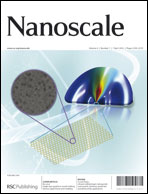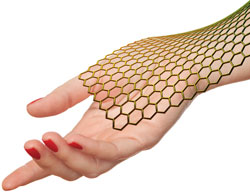The latest issue of Nanoscale is now online. You can read the full issue here:
The outside front cover is a Feature Article titled: Far-field photostable optical nanoscopy (PHOTON) for real-time super-resolution single-molecular imaging of signaling pathways of single live cells by Tao Huang, Lauren M. Browning and Xiao-Hong Nancy Xu.
The Communication featured on the inside front cover is: A zwitterion-DNA coating stabilizes nanoparticles against Mg2+ driven aggregation enabling attachment to DNA nanoassemblies by Thilak Kumara Mudalige, Oleg Gang and William B. Sherman.
Issue 9 contains the following Review:
- Recent advances in solar cells based on one-dimensional nanostructure arrays
Miao Yu, Yun-Ze Long, Bin Sun and Zhiyong Fan
Also of interest are the below Feature Articles:
- Far-field photostable optical nanoscopy (PHOTON) for real-time super-resolution single-molecular imaging of signaling pathways of single live cells
Tao Huang, Lauren M. Browning and Xiao-Hong Nancy Xu - Manufacturing of inorganic nanomaterials: concepts and perspectives
Alberto Gasparotto, Davide Barreca, Chiara Maccato and Eugenio Tondello
Fancy submitting an article to Nanoscale? Then why not submit to us today!



















